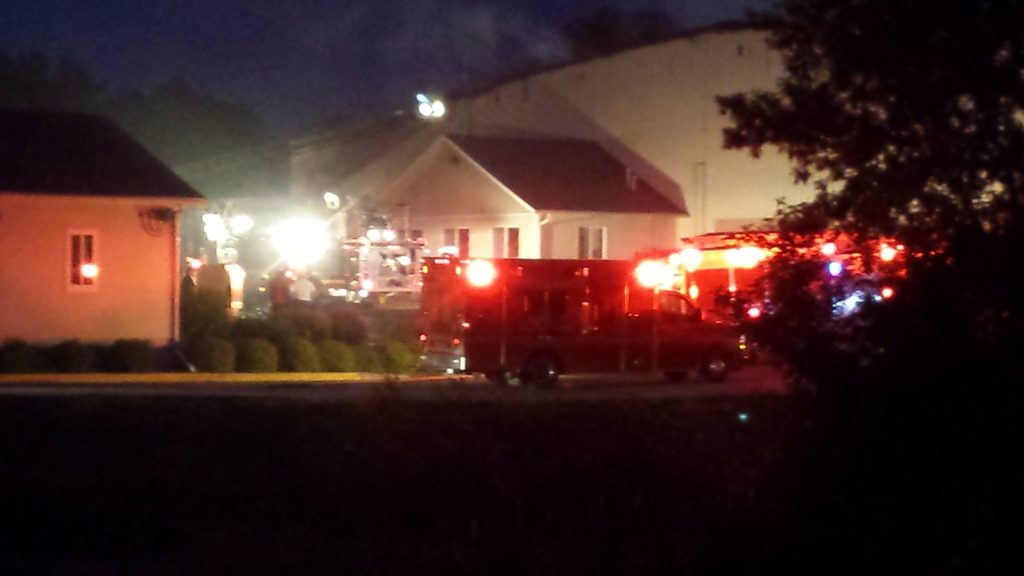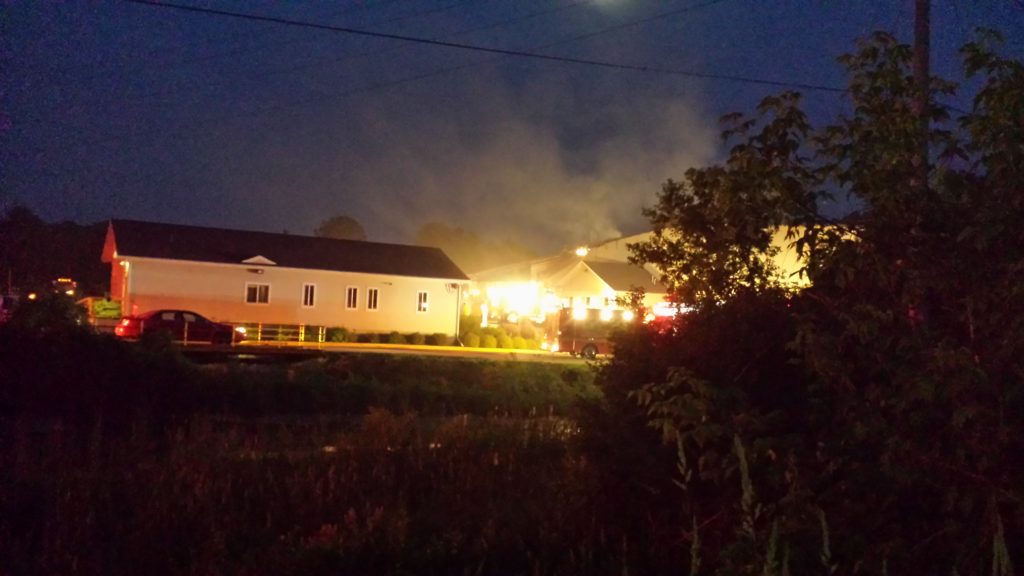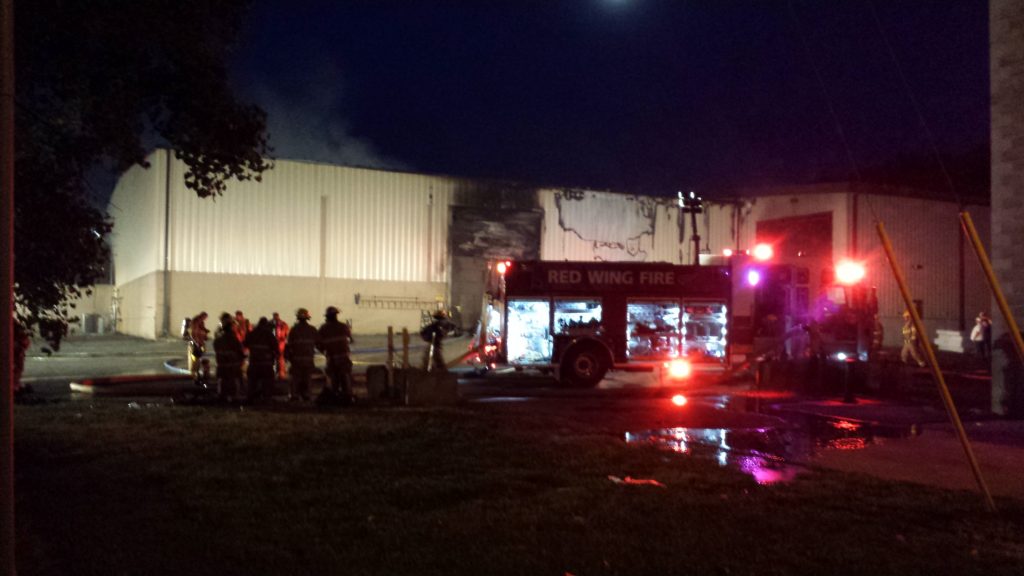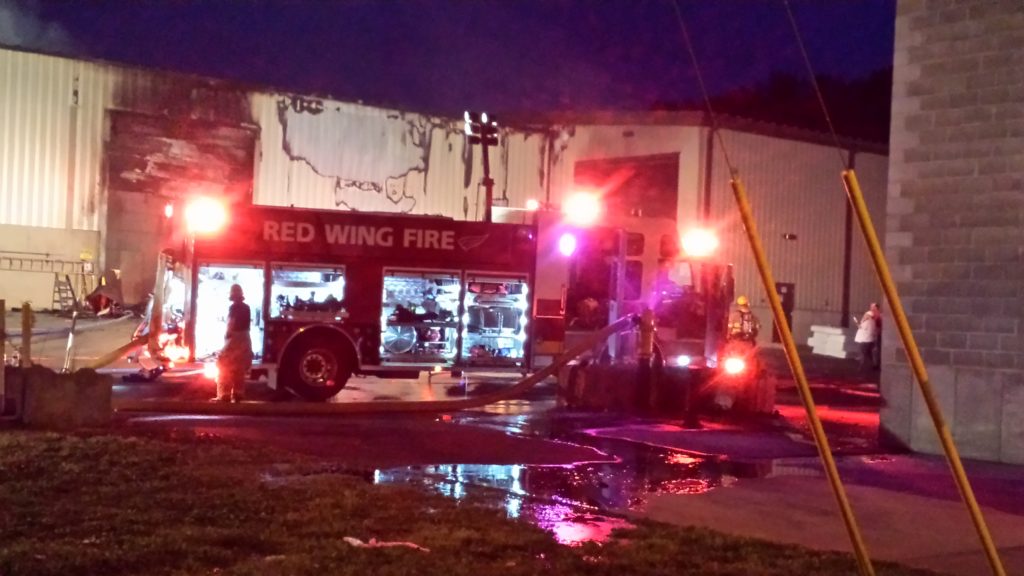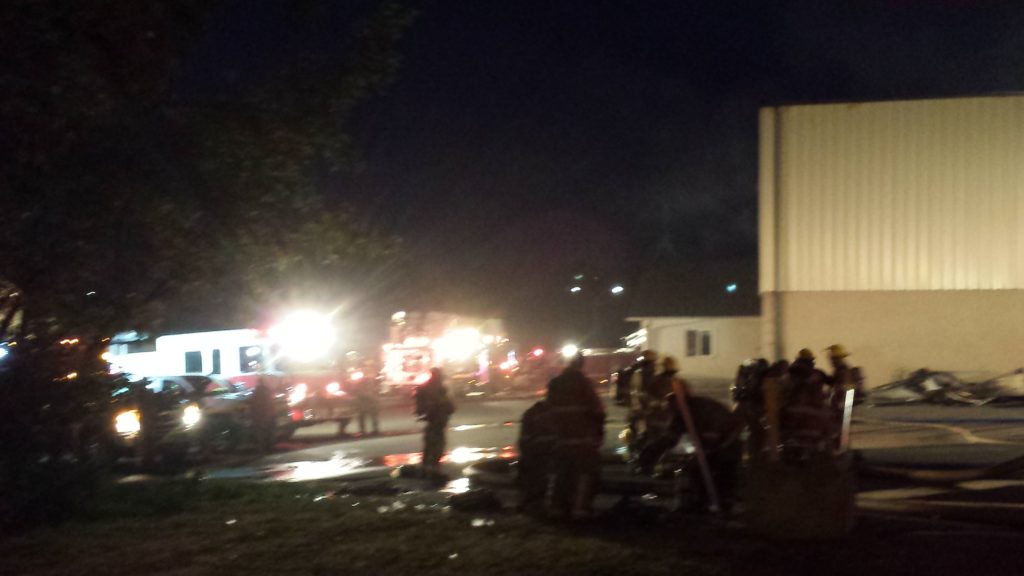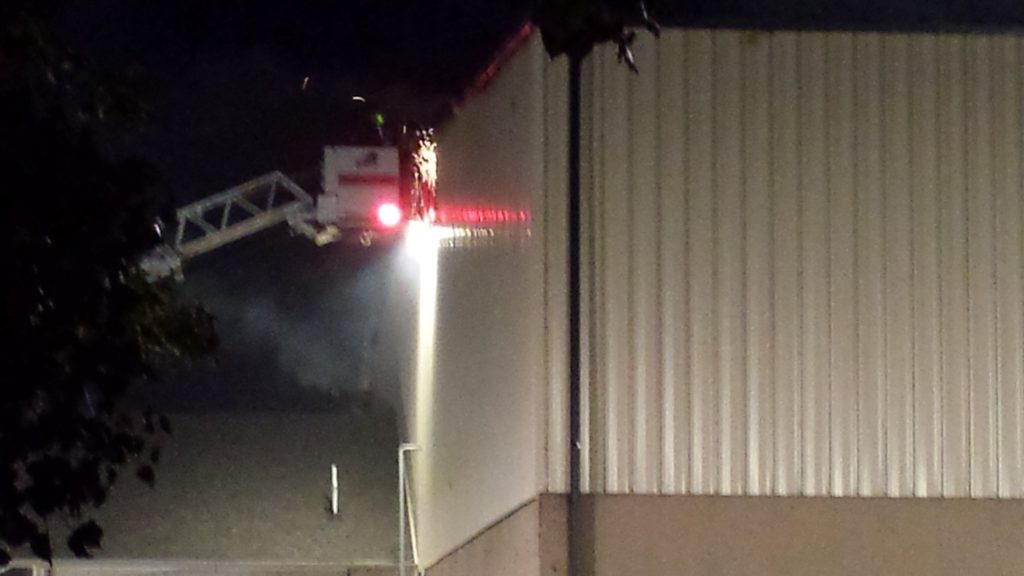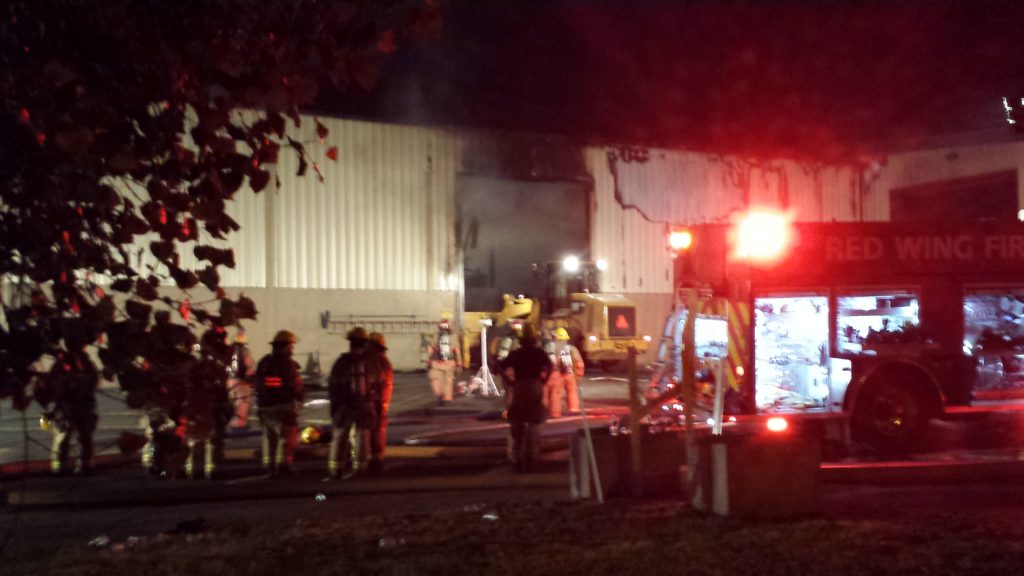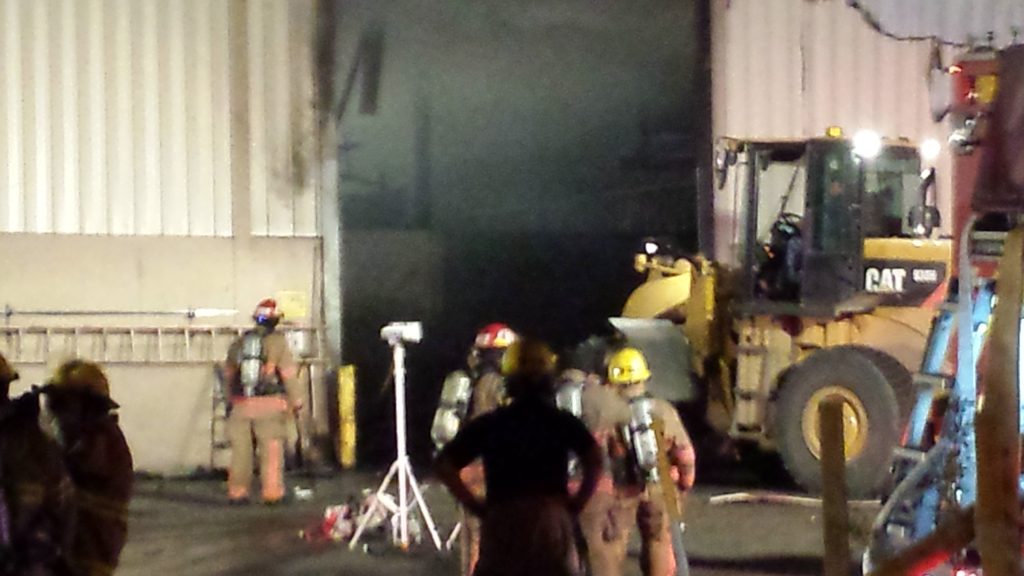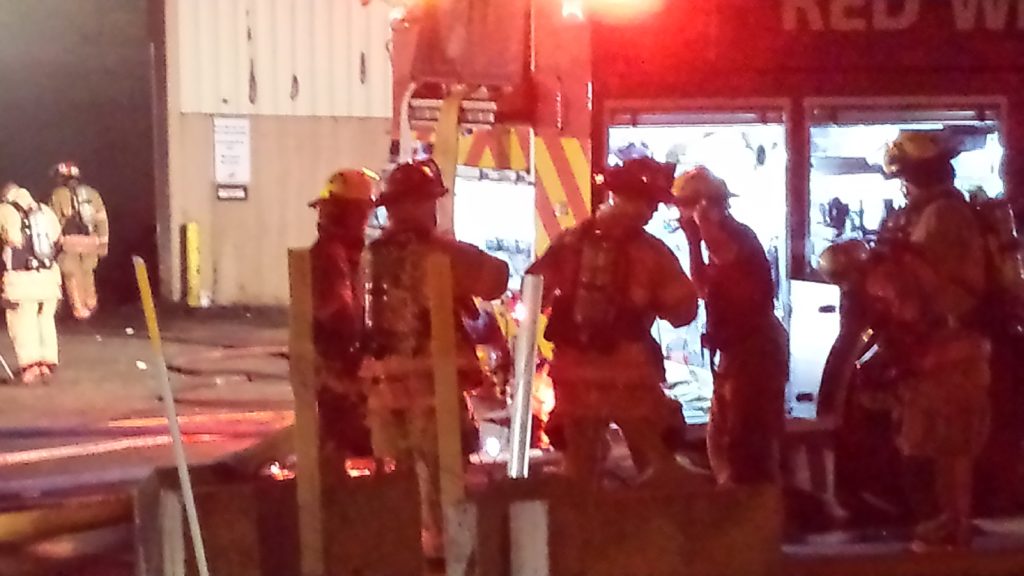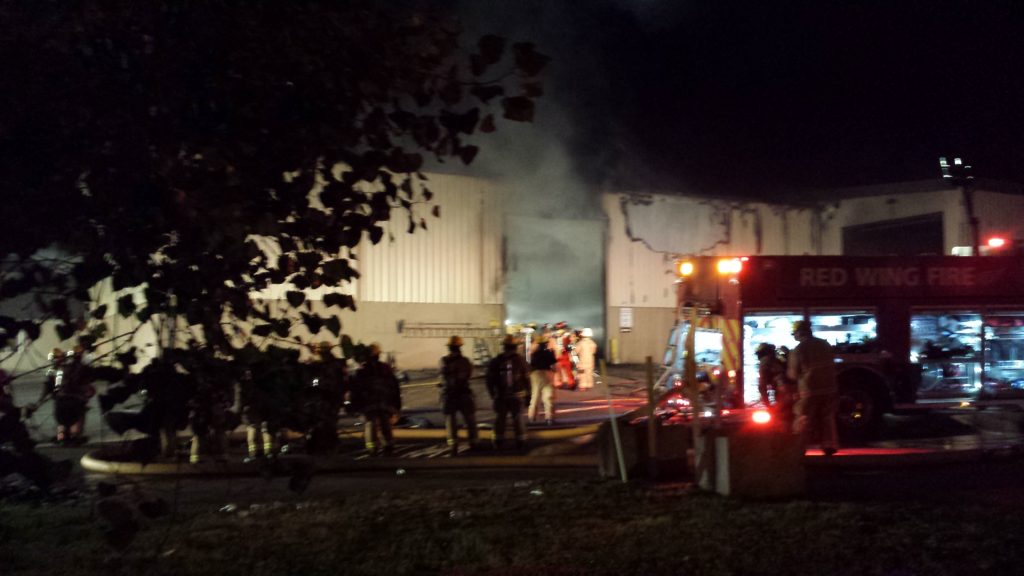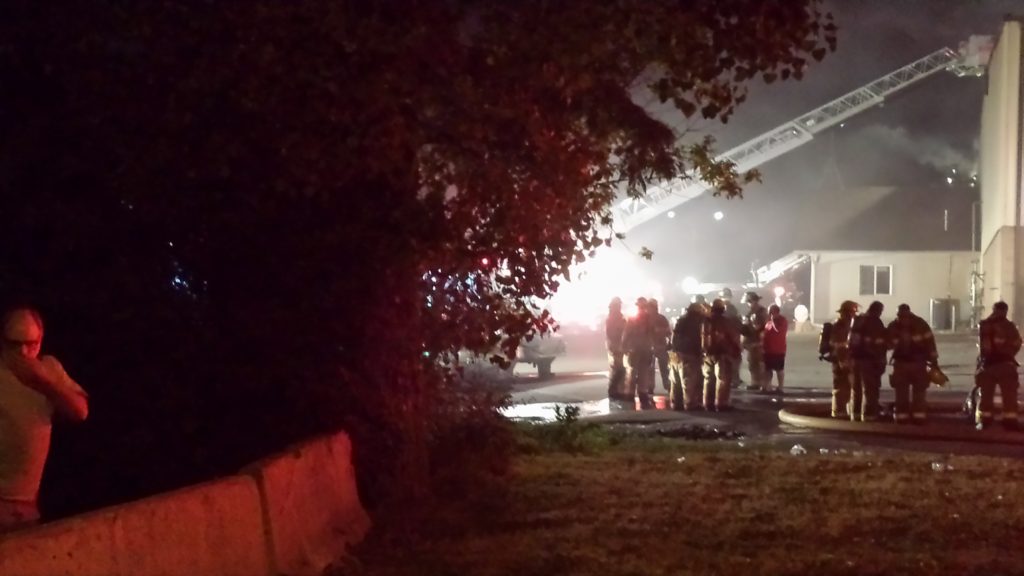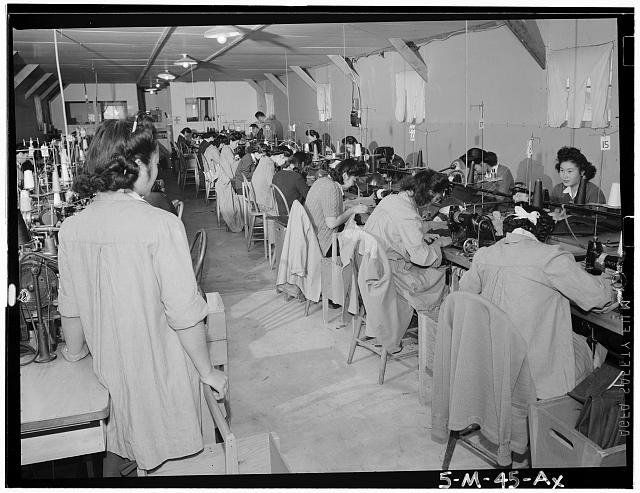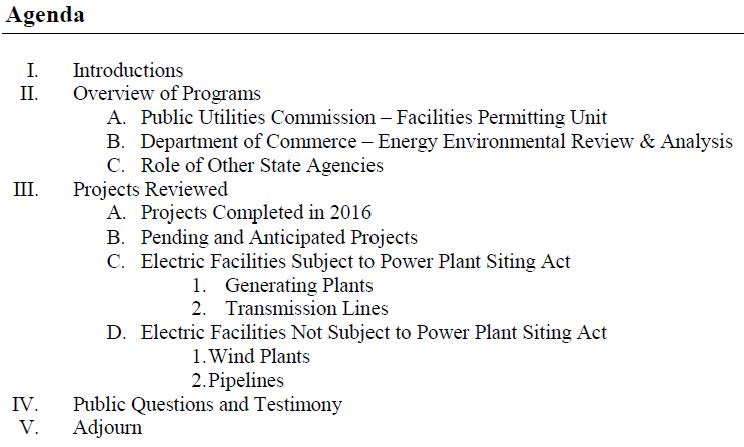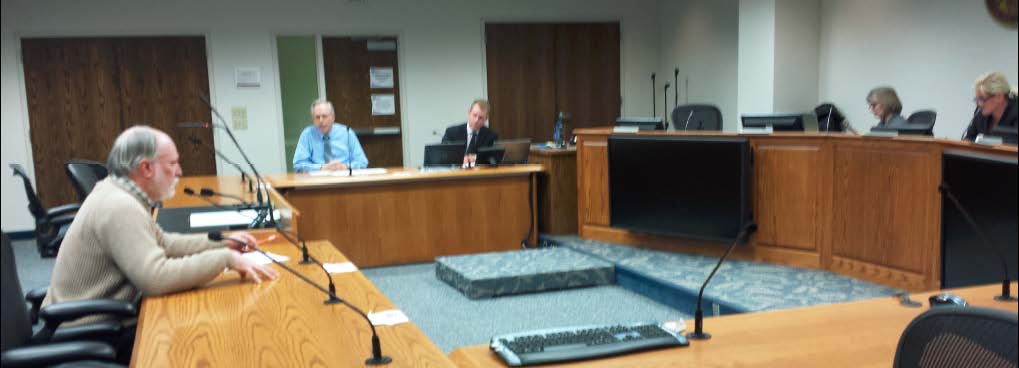Red Wing Incinerator is BURNING!!!
June 7th, 2017
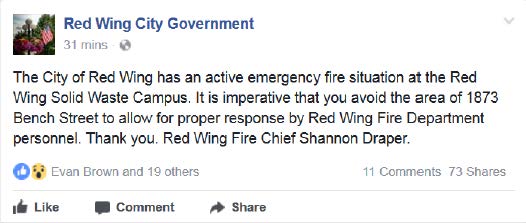
So I see this notice, and run downstairs, “Alan, we’ve got to move!” and we hustled over to the “Solid Waste Campus,” and at the Bench Street intersection, waiting for the light, a fire truck comes roaring up, I quick take a left and scoot over to the right to let them through, it’s Lake City. Yeah, this must be some “active emergency fire situation.” And sure enough, I pulled over, got out, and got a few shots until I was shooed away. This is what we first saw, just as the sun was setting, about 9:15 p.m.:
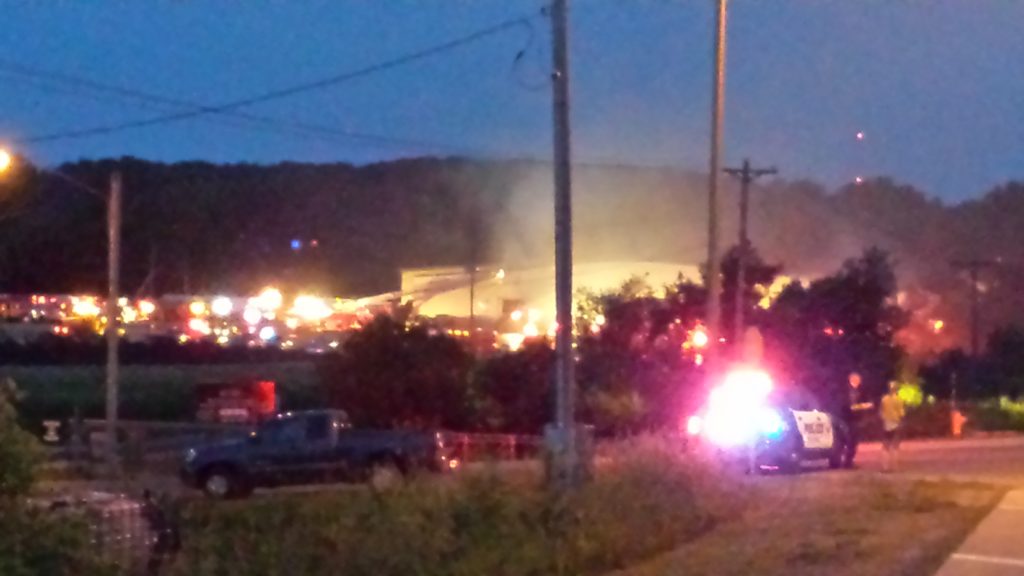
KTTC from Rochester was there too, and here’s their report:
Fire breaks out in Red Wing incinerator
Posted: Jun 07, 2017 9:47 PM CST
75 years ago – America’s Shameful Japanese Internment
February 18th, 2017
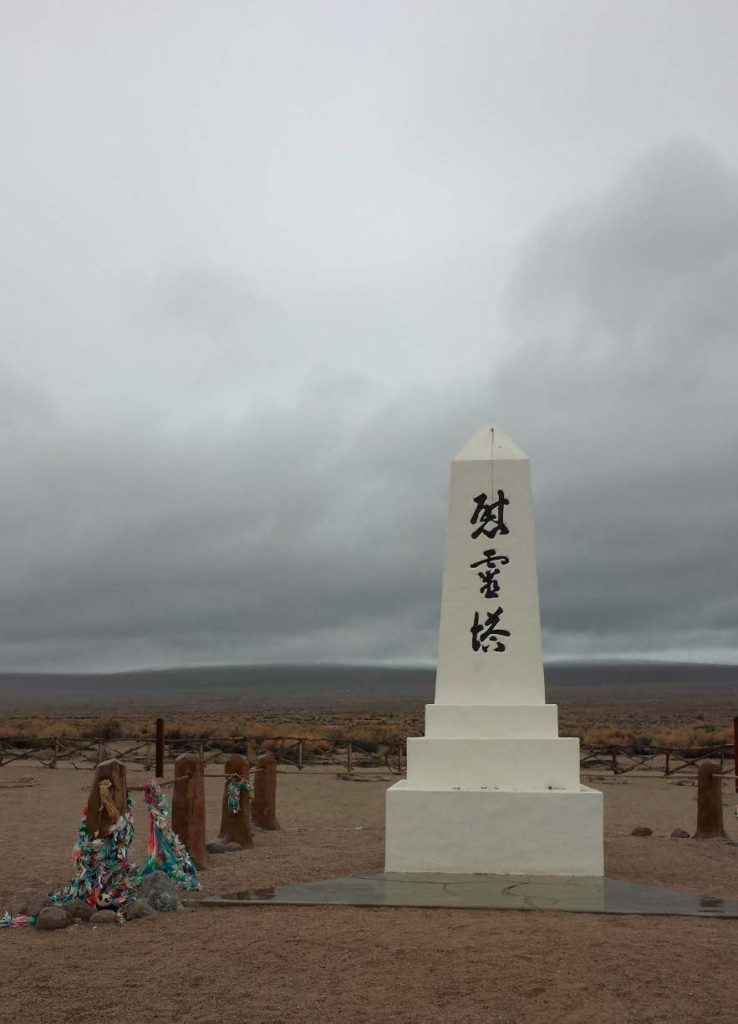 Photo of Memorial taken yesterday at Manzanar — eerily similar to Wounded Knee
Photo of Memorial taken yesterday at Manzanar — eerily similar to Wounded Knee
America’s internment of Japanese Americans… It began with an Executive Order, after some groundwork was laid. Does this sound familiar?
Yesterday, Alan Muller and I visited the Manzanar National Historic Site. Every American should be required to spend a day there and learn of our treatment of Japanese Americans during WWII.

Manzanar, near Independence, California (really, “Independence”). It’s the site of one of the ten Japanese internment camps, and yes, it was a prison camp. Guard towers, armed guards keeping people inside the camp. People who were rounded up and “evacuated” from their homes, their businesses, their communities, and put behind barbed wire.
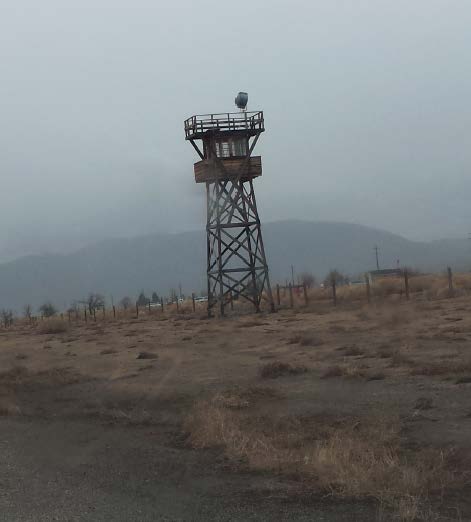
How did this happen the United States of America? Look around, right now, at what is happening and you’ll see that we’re on the path to repeat this ugly history.
On February 19, 1942, President Franklin Roosevelt signed Executive Order 9066, the order directing capture, rounding up, and internment of Japanese Americans during World War II. It’s fairly short, with a misleading heading, and far-reaching impacts:
Executive Order 9066 February 19, 1942
Authorizing the Secretary of War to Prescribe Military Areas
Whereas the successful prosecution of the war requires every possible protection against espionage and against sabotage to national-defense material, national-defense premises, and national-defense utilities as defined in Section 4, Act of April 20, 1918, 40 Stat. 533, as amended by the Act of November 30, 1940, 54 Stat. 1220, and the Act of August 21, 1941, 55 Stat. 655 (U.S.C., Title 50, Sec. 104);
Now, therefore, by virtue of the authority vested in me as President of the United States, and Commander in Chief of the Army and Navy, I hereby authorize and direct the Secretary of War, and the Military Commanders whom he may from time to time designate, whenever he or any designated Commander deems such action necessary or desirable, to prescribe military areas in such places and of such extent as he or the appropriate Military Commander may determine, from which any or all persons may be excluded, and with respect to which, the right of any person to enter, remain in, or leave shall be subject to whatever restrictions the Secretary of War or the appropriate Military Commander may impose in his discretion. The Secretary of War is hereby authorized to provide for residents of any such area who are excluded therefrom, such transportation, food, shelter, and other accommodations as may be necessary, in the judgment of the Secretary of War or the said Military Commander, and until other arrangements are made, to accomplish the purpose of this order. The designation of military areas in any region or locality shall supersede designations of prohibited and restricted areas by the Attorney General under the Proclamations of December 7 and 8, 1941, and shall supersede the responsibility and authority of the Attorney General under the said Proclamations in respect of such prohibited and restricted areas.
I hereby further authorize and direct the Secretary of War and the said Military Commanders to take such other steps as he or the appropriate Military Commander may deem advisable to enforce compliance with the restrictions applicable to each Military area hereinabove authorized to be designated, including the use of Federal troops and other Federal Agencies, with authority to accept assistance of state and local agencies.
I hereby further authorize and direct all Executive Departments, independent establishments and other Federal Agencies, to assist the Secretary of War or the said Military Commanders in carrying out this Executive Order, including the furnishing of medical aid, hospitalization, food, clothing, transportation, use of land, shelter, and other supplies, equipment, utilities, facilities, and services.
This order shall not be construed as modifying or limiting in any way the authority heretofore granted under Executive Order No. 8972, dated December 12, 1941, nor shall it be construed as limiting or modifying the duty and responsibility of the Federal Bureau of Investigation, with respect to the investigation of alleged acts of sabotage or the duty and responsibility of the Attorney General and the Department of Justice under the Proclamations of December 7 and 8, 1941, prescribing regulations for the conduct and control of alien enemies, except as such duty and responsibility is superseded by the designation of military areas hereunder.
Franklin D. Roosevelt
The White House,
February 19, 1942.
These are the areas picked for “from which any or all persons may be excluded, and with respect to which, the right of any person to enter, remain in, or leave shall be subject to whatever restrictions the Secretary of War or the appropriate Military Commander may impose in his discretion.”
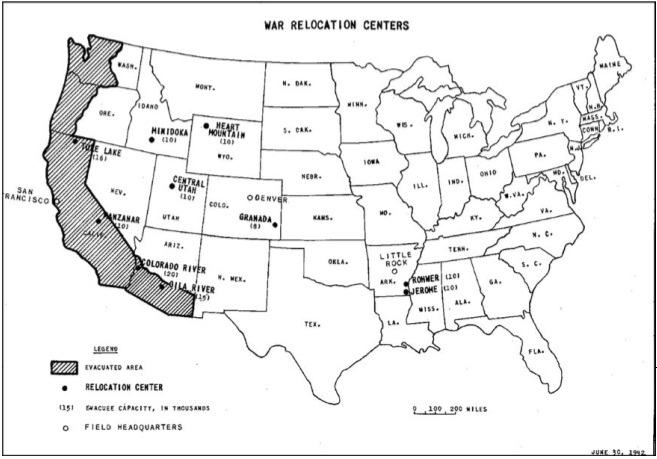
The striped areas including all of California, and parts of Washington, Oregon and Arizona were deemed Over 100,000 Japanese Americans were torn out of their homes, picked up, and put in “internment” camps, concentration camps by another name. The states on the west coast were declared “military areas” of exclusion. Though the word “Japanese” was not stated in the Executive Order, it built on racism and fear racheted up by the government in years prior, pushed by hatred of powerful and wealthy ones who stood to gain from internment, and who stood to gain from the resources Japanese Americans were forced to leave behind. With little notice, and no due process, Japanese Americans were rounded up, put on trains, trucks, or took their own vehicles to the assembly areas, staging for shipment to the internment camps like so much cattle. The photos and films of this process are disturbing, much like Holocaust scenes of people shoved into the backs of trucks, peering out through gates; of trains tightly packed with children waving, even holding American flags; of people standing in line with whatever possessions they could carry; of so many with expressions of horror, fear, anguish, and anxiety.
Life in the camps was hard. Camps were isolated in rugged and unforgiving terrain. Make no mistake about it, they were prison camps, with guard towers and barbed wire — no one could go out, until later when some were allowed to move east, if they were able to demonstrate that they had a job, a home, and that they would not be a burden on society. On arrival at the camps, they were assigned barracks, grouped by families or just put into a room with strangers, with nothing other than what little they could carry on their journey, and were given a straw mattress. Showers and toilets were primtive with no privacy. There was a network of mess halls for meals and prisoners did the cooking, making do with what resources they had, farming, raising poultry and livestock, with Over time, people made minimalist furniture, sewed clothes, established a hospital, newspaper, gardens, cemetary, and a camp system of government. There were jobs for prisoners, from cooking, to sewing camouflage nets, to construction at the camp. There were schools for children and adults, a choir, sports, but it was not fun and games. They could not leave, and knew they had lost everything when they were forced to leave.
During internment, prisoners were presented with a loyalty oath, which was problematic, because they were imprisoned, their human and civil rights were disregarded, yet they were asked to declare loyalty to America, the same America that had stolen their lives and possessions and imprisoned them! At that time they were not allowed to become citizens, and yet if from Japan they were asked to renounce their Japanese citizenship, and would then be without a country.
If you dig into the archives, you’ll also see photos and films of people dressed in finery, as if going on vacation — I’d guess these were the government propaganda photos, or films like this:
From that film, at 24:40:
We’re setting a standard for the rest of the world in the treatment of people who may have loyalty to an enemy nation. We are protecting ourselves without violating the principles of Christian decency.
Oh, right, this is an example of Christian principles?
Dorthea Lange – Inside a Barrack:

Dorthea Lange – Grandfather and Grandson:

Here’s a collection by Ansel Adams from the Library of Congress (Rights Advisory: No known restrictions on publication) showing day to day life in the Manzanar camp:
Ansel Adams’s Photographs of Japanese-American Internment at Manzanar
From that collection, “Sumiko Shigematsu, foreman of power sewing machine girls, Manzanar Relocation Center, California”
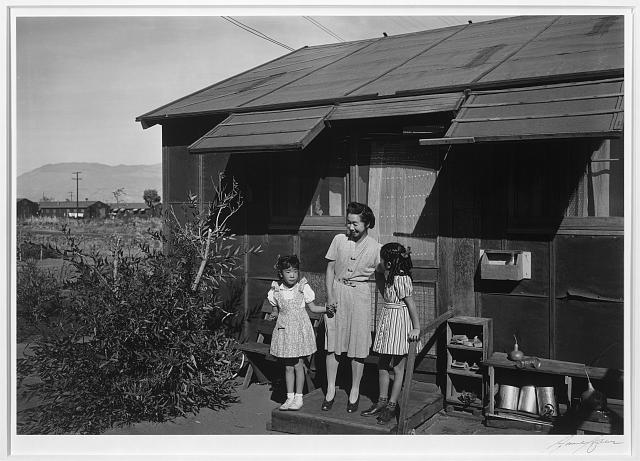
Remember that this internment of Japanese Americans began with an Executive Order? Well, I’ve been tracking the tRump Executive Orders, and in particular the Muslim Ban of EO 13769 and the many court cases challenging it on behalf of particular plaintiffs, affected by the Executive Order, and most importantly, the Constitutional challenges of the states of Washington and Minnesota.
EO13769 -Protecting the Nation From Foreign Terrorist Entry Into the United States
This is how it starts, openly blatantly campaigning on a Muslim Ban, and don’t forget his statements at the airport hangar in Minneapolis:

It’s up to us to make sure this does not happen again.
Some previous Legalectric posts:
Yesterday, I picked up a copy of “By Order of the President: FDR and the Internment of Japanese Americans,” written by Greg Robinson.
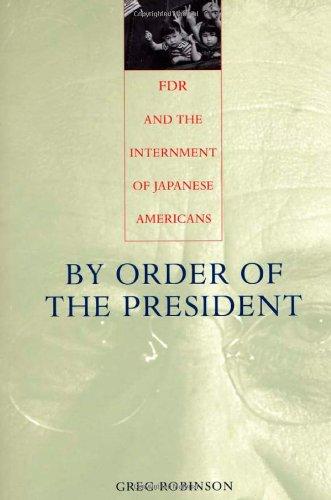 A review blurb on the back says it well, why we need to pay close attention NOW (more on this after I have some time to ruminate and digest):
A review blurb on the back says it well, why we need to pay close attention NOW (more on this after I have some time to ruminate and digest):
Robinson’s book reminds us that panicky acts in a national crisis that sacrifice rights for which we claim to fight emerge not just from immediate insecurity but from deeper prejudices and fears…
Executive Orders… that’s how we got EO13769. tRump’s EOs have been weird. After making “Obama’s illegal Executive Orders” a campaign meme, he fires off messy, illogical, and yes, illegal ones of his own, and like Obama, it’s not just Executive Orders, it’s multiple Memoranda. You can find them on the White House Presidential Actions page and at the Federal Register – Agencies – Executive Office of the President. It wasn’t easy. It took days for Executive Orders and Memoranda to show up, and so it was impossible to know exactly what he was doing, but then, it looks like he didn’t know what he was doing either. For example, I was concerned about his Dakota Access Pipeline action, Trump_Memorandum Dakota Access (note it is NOT an Executive Order). In checking that out, I found an error (and fired off a missive to the White House Contact Page)! You can see both versions here, they’ve filed a corrected one.
More importantly, this also happened with the Muslim Ban, EO13769, which I went over with a fine tooth comb because I don’t know much about immigration law. The EO in Sec. 8 cites 8 U.S.C. 1222 which is about a physical examination, so I’d also sent a demand for correction to the White House. It’s still wrong, LOOK AT SEC. 8, it’s not been corrected!!! The Federal Register publication of EO13769 is correct.
Thankfully I wasn’t the only one looking. Turns out there was a lot more than that, the versions published on the White House Presidential Actions page were not the same as those signed and sent for publication in the Federal Register. WHAT?!?!
WH posts wrong versions of Trump orders
White House posts wrong versions of Trump’s orders on its website
That there’s been insufficient thought and vetting of these Orders and Memoranda is obvious. You’d think that where an Executive Order such as EO13769 takes such sweeping steps to exclude a classification of people from the US that they’d give best efforts toward accuracy.
Substantively, the Muslim Ban that is EO13769 is not about national security, that much is clear from the government’s arguments, more correctly the government’s lack of any evidence that it was about national security, and Washington’s evidence, as above, from tRump’s campaign website that the purpose was to prevent Muslim immigration.
Japanese internment. Muslim ban. Think it can’t happen here, again? It’s been slowed, but EO13769 has not yet been revoked, and the anti-Muslim sentiments remain displayed on tRump’s campaign site.
NEVER AGAIN!
BE VIGILANT!
SPEAK UP!
TO DO: FIVE ACTIONS A DAY
It doesn’t take much to make a difference — and each of us must do what we can do. We each have different unique skills and abilities which America needs right now.
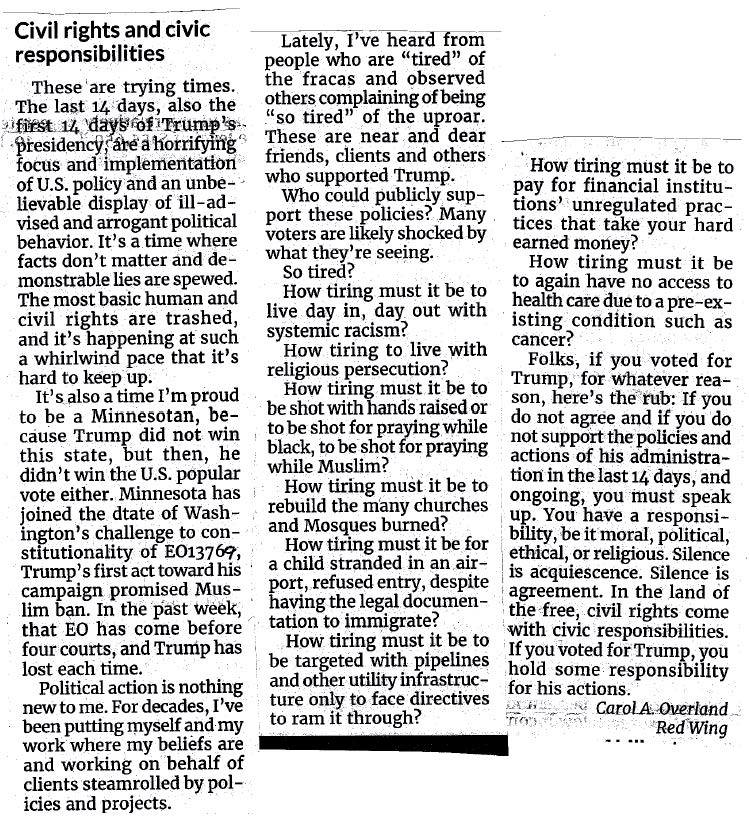
Gangs of America – good reading these days
February 9th, 2017
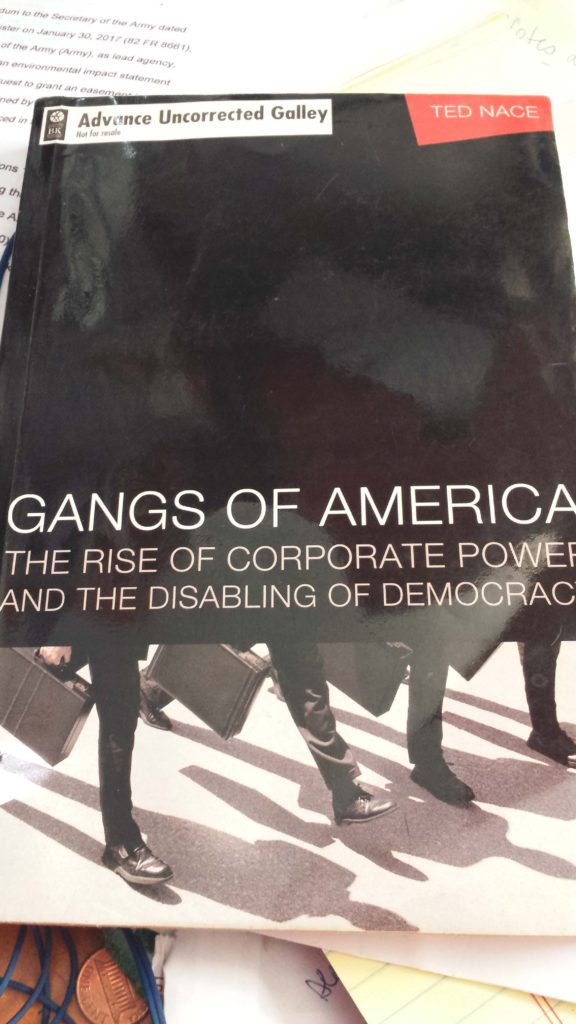
Looking forward to catching up with Ted Nace soon in San Francisco. He’s author of Gangs of America: The Rise of Corporate Power and the Disabling of Democracy — get your copy HERE.
Alan Muller and I had the good fortune of meeting him through our “no coal” work and the “No New Coal Plants” list that was instrumental in stopping so many coal gasification plants across the U.S., including Minnesota’s Excelsior Energy Mesaba Project (see also www.camp-site.info)and the NRG coal gasification plant proposed for Delaware. He wrote this Orion article about that coal gasification fight (a couple things are off — hey, Ted, it’s an ORANGE crate!!):
And from that, he also also wrote:
Climate Hope: On the Front Lines of the Fight Against Coal
Check these out, you can find them reasonably priced at www.abebooks.com. Support your independent bookseller!
MN’s Renewable Development Fund HF235/SF214
February 3rd, 2017
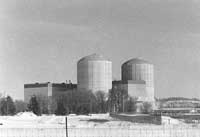
Some have said that the Renewable Development Fund is sacred. WRONG. The Renewable Development Fund is profane, not sacred, all the way from its origins to its uses. It’s now under scrutiny at Minnesota legislature, and institutional memory is nowhere to be found in this discussion. See HF 235 and SF 214.
The Renewable Development Fund (RDF) came into being in the 1994 Prairie Island bill, and was to be a per cask compensation fund for the Prairie Island Indian Community for storage of nuclear waste next door and extension of Prairie Island nuclear plant life. That compensation was turned into the RDF in a late night deal by “environmental” groups lobbying, of which Bill Grant (now Deputy Commissioner, Dept. of Commerce, formerly and then Izaak Walton League) was an integral part, Michael Noble (ME3, now “Fresh Energy”), and George Crocker (North American Water Office) too. Prairie Island Indian Community was supposed to get priority in grants, but that never happened. The RDF was administered by 3 from Xcel, plus Bill Grant, and one other “environmental” rep. The composition of the group giving out the grants has changed, and there is now someone from PI on it, but that’s recent. (Full Disclosure: I represented Florence Twp. fighting the “in Goodhue County” alternate site mandate for nuclear waste and the Township worked very mindful of, and often in tandem with, PIIC, where it fiercely refused to acquiesce to Xcel and say “STICK IT THERE” to PIIC. The working relationship continues and PIIC is now largest private landowner in Florence Twp.).
1994 Prairie Island bill — Ch. 641, MN Session Laws (https://www.revisor.mn.gov/laws/?year=1994&type=0&doctype=Chapter&id=641).
The RDF was a material term of the 2003 Prairie Island bill, where as part of the deal millions of RDF money was to go to the Excelsior Energy Mesaba Project. Bill Grant was primary again, and when the Mesaba Project was stricken in one House session, a red-faced Tom Micheletti came flying down the hall yelling at Grant “We had a deal, we had a deal!” That deal was later added back in, and Micheletti’s Excelsior Energy coal gasification plant, Mesaba Project, was added to the factors to keep PI open. “Environmental groups” got massive grants to promote coal gasification. Micheletti got $10-12 million from RDF for Mesaba (and lots more from IRRB and DOE) and other regulator perks in the 2003 law, like exemption from CoN, and a mandated PPA with Xcel. (Full Disclosure: I represented MNcoalgasplant.com against Mesaba Project, and with CAMP and help from Xcel, we got the details of coal gasification, that project was killed, and the info killed others nationwide, but Mesaba still has a site permit in Taconite from PUC valid until 2019!)
2003 Prairie Island bill – Ch. 11, MN Session Laws (https://www.revisor.mn.gov/laws/?year=2003&type=1&doctype=Chapter&id=11)
On Monday, January 23, the Red Wing City Council voted to accept a $2 million grant from RDF to install a garbage grinder, a project they’ve been lobbying for for years, where they’ll take in garbage from the whole county, grind it up, and burn it in Xcel’s garbage burner here, its air permit expired in 2009! GARBAGE!!! DOH! GARBAGE is not clean, it’s toxic! The purpose of all this is to keep the incinerators open and burning. (Full Disclosure: I have been representing clients being screwed by Xcel’s plan for “ash mining” in their incinerator ash landfill in Red Wing, part of which includes a plan to build a Red Wing laydown yard and crusher on a site half of which is designated Water Tower Burial Mounds — yeah, really. That’s been exposed:
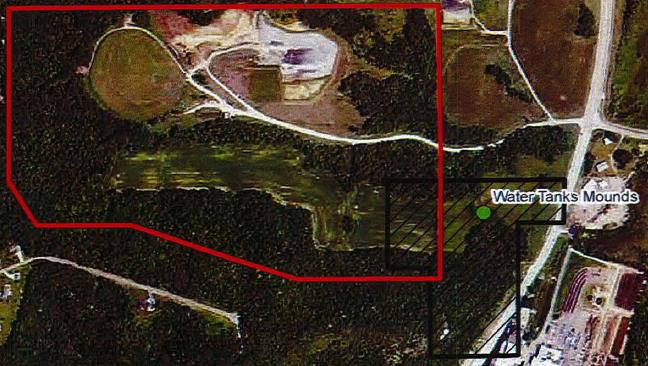
My partner, Alan Muller, is an incineration expert and has worked with groups to stop RockTenn; Midtown Burner in Phillips, Rockford City and Township; HERC uprate, etc. See the Tyler Hills Neighbors Comments: Comment Extension for Lab USA EAW & Xcel & Lab USA Solid Waste)
The RDF has been a slush fund for deals enabling nuclear, promoting coal gasification, and greasing the skids for scams of great financial and environmental magnitude and impact. It should be shut down and turned over to Prairie Island Indian Community as originally intended.
2016 PPSA Annual Hearing
December 23rd, 2016
Tuesday was the Annual Hearing for the Power Plant Siting Act. I’ve been fighting off this sickness that Alan’s had for a week now, and not quite feeling right, more like life inside a pillow, everything’s rather dampened. But I slogged out into the world, and raised a few of the recurring points, issues with the Power Plant Siting Act, particularly public participation issues common not just to the Power Plant Siting Act (Minn. Stat. Ch. 216E ), but also to wind siting dockets under Minn. St. Ch. 216F, and pipeline routing dockets under Minn. St. Ch. 216G.
Here’s how to submit comments, deadline January 20, 2017:
Until this year, the Power Plant Siting Act Annual Hearing has included a review, rundown, listing, of all the projects approved by the Commission, including wind and pipelines, and this was anticipated at this hearing per the notice:
The full Notice:
HOWEVER… that report, “Projects Reviewed” section D, “Electric Facilities Not Subject to Power Plant Siting Act, did not occur. I’d guess in large part it was due to the many issues raised by those intervening and participating, or attempting to participate, in wind siting dockets who have appeared at PPSA Annual Hearings over the years. And I’m sure they did not want input from those participating and intervening in pipeline dockets, we’ve seen how Enbridge cancelled their “public informational meetings” up north after having to face the public and their legitimate issues the day before in Bemidji. Alan Mitchell, formerly EQB PPSA staff, and now working for Enbridge, was there, so this was on Enbridge’s radar, but of course, that Alan didn’t have any comments for the record (I do wish I remembered more about the pipeline rules rewrite that he worked on during his time at the EQB, I think somewhere around 2002-2004?).
The ALJ is to write a summary of the Comments, both at the meeting, and those filed afterwards, and then? What happens? Experience says “not much.” PUC staff responded to the “What happens” question saying that things that don’t require statutory changes or rulemaking, that those are things they want to impliment, to change, to improve, and to the extend that we can, we implement. So he said. When the report comes from the ALJ, they review it, they’ll have the transcript from this meeting, and will go over it.
There was a pretty crowded room, better attendance than for the last couple of years, with two new members of the public speaking up. John Munter, who has been very active in opposition to the Sandpiper and now the Line 3 “replacement” pipeline issues, spoke about the difficulties of participating in the dockets, the difficult to untangle web of “need” and “route” dockets, and of the many pipeline projects ongoing. Tina Carey spoke of the issues she and her neighborhood encountered during construction of the massive “largest in Minnesota” solar project that went up across the street, and that the complaint process was insufficient and ineffective, and the neighborhood’s complaints were disregarded. Cynthia Warzecha, of the DNR, gave a solid synopsis of DNR activities in PPSA dockets, and I’ll note that the DNR and DOT have really gotten into the groove of reviewing projects and providing material and substantive comments for consideration, in the EIS and in the route or siting docket (and also in environmental review in Certificate of Need dockets). Kristen Eide-Tollefson spoke as an individual with a 20 year history as a participant in routing and siting dockets, and noted for the record this legislative prelude to the transfer of environmental review from the EQB to the Dept. of Commerce:
2005 Session — Chapter 97, Article 3, lays out the purpose for transfer from EQB to PUC and DOC, of responsibilities for Siting, Routing and Environmental Review.Environmental Review. Sec. 17. To ensure greater public participation in energy infrastructure approval proceedings and to better integrate and align state energy and environmental policy goals with economic decisions involving large energy infrastructure, all responsibilities, as defined in Minnesota Statutes, section 15.039, subdivision 1, held by the Environmental Quality Board relating to power plant siting and routing under Minnesota Statutes, sections 116C.51 to 116C.69; wind energy conversion systems under Minnesota Statutes, sections 116C.691 to 116C.697; pipelines under Minnesota Statutes, chapter 116I; and rules associated with those sections are transferred to the Public Utilities Commission under Minnesota Statutes, section 15.039, except that the responsibilities of the Environmental Quality Board under Minnesota Statutes, section 116C.83, subdivision 6, and Minnesota Rules, parts 4400.1700, 4400.2750, and 4410.7010 to 4410.7070, are transferred to the commissioner of the Department of Commerce. The power plant siting staff of the Environmental Quality Board are transferred to the Department of Commerce. The department’s budget shall be adjusted to reflect the transfer.
2006 Report to PUC – Docket 06-1733
2007 Report to PUC – Docket 07-1579
2008 Report to PUC – Docket 08-1426
2009 Report to PUC – Docket 09-1351
2010 Report to PUC – Docket 10-222
2011 Report to PUC – Docket 11-324
2012 Report to PUC – Docket 12-360
2013 Report to PUC – Docket 13-965
2014 Summary Comments– Docket 14-887
2015 Summary Report – Docket 15-785



